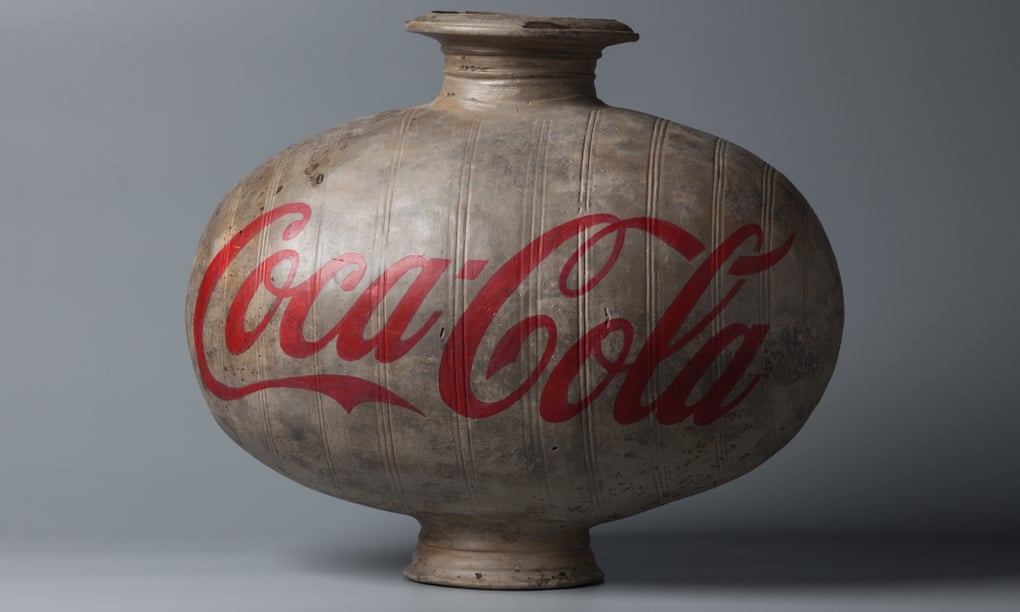Kettle’s Yard–University of Cambridge’s modern and contemporary art gallery presents an exhibition entitled Ai Weiwei: The Liberty of Doubt.
Ai Weiwei is a Chinese contemporary artist and activist. He is well-known for his sculpture, photographs, and public works that express his political critics and personal poetry. Ai Weiwei is also famous as a vocal political commentator, as he has been openly critical of the government, and investigated government corruption. He was also detained in 2011 for 81 days by Chinese authorities because of his political activism.
This exhibition shows Ai Weiwei’s deconstruction of truth, authenticity, and value through historic Chinese art objects. He identified some of them as original, like from the Northern Wei (386-534 CE) dynasty, some as counterfeits, and others as copies of original works. Yet, it looks like Ai Weiwei questioning the meaning of authenticity by presenting the original as fake, and the fake as the original.

Ai Weiwei, Dropping a Han Dynasty Urn, 1995. Three gelatin silver prints, 148 x 121 cm each. Courtesy Ai Weiwei Studio © Ai Weiwei. https://www.guggenheim-bilbao.eus/
One of the artist’s most famous images, Dropping a Han Dynasty Urn, is made here in LEGO bricks. Dropping a Han Dynasty Urn is a photographic work created by Ai Weiwei in 1995. It portrays Ai Weiwei dropping a 2,000-year-old Chinese ceremonial urn and smashing it to the floor. The Han dynasty (206 BCE-220 CE) is an important period in Chinese civilization. By dropping a historical art object from this period, Ai Weiwei questioned how and by whom cultural values are created. This work also “draws attention to the Chinese government’s destruction of the country’s heritage”.
Ai Weiwei’s works are remarkable, beautifully crafted in jade, marble, and porcelain, and explore contemporary social issues, from government dictatorship, current geopolitical crises, coronavirus pandemic, to globalization.

Ai Weiwei, Surveillance Camera and Plinth, marble. Courtesy Ai Weiwei Studio © Ai Weiwei. https://www.sothebys.com
Surveillance Camera and Plinth is a marble carving of a surveillance camera seated on a plinth. Ai Weiwei combines sculpture craftsmanship that has long history in China with a symbol of modernity. This work is an outspoken critic to the government’s surveillance of society. The concept for Surveillance Camera and Plinth emerged after Ai found cameras and listening devices in his studio. The work also represents his personal experience during the detainment period.

Ai Weiwei, Han Dynasty Urn with Coca-Cola Logo, 2014. Photograph: Ai Weiwei Studio. https://www.theguardian.com/
Han Dynasty Urn with Coca-Cola Logo is another Ai Weiwei’s subversive works. It is a Chinese ancient urn overpainted with a vivid red Coca-Cola logo. The artist presents a contrast between ancient Chinese artifacts and the Coca-Cola logo as a symbol of capitalism’s mass production. This work underscores the destructive effects of China’s engagement with global capitalism.
This exhibition is also screening three of the artist’s documentary films, Coronation (2020), Cockroach (2020), and Human Flow (2017). Coronation is a film about Chinese state control during the lockdown period in Wuhan. While Cockroach filmed the height of protest in Hongkong in 2019. Human Flow explores the migration and refugee crisis that happened around the world. This film portrays “its subjects and their desperate search for safety, shelter, and justice”.
Ai Weiwei is undoubtedly a brave and brilliant artist whose noteworthy artworks siding on humanity and questioning the abuse of power. His life, political voices, and works represent his determination as an artist and activist.
Ai Weiwei: The Liberty of Doubt is on view at Kettle’s Yard, from 12 February 2022 – 19 June 2022, 11 am – 5 pm.

